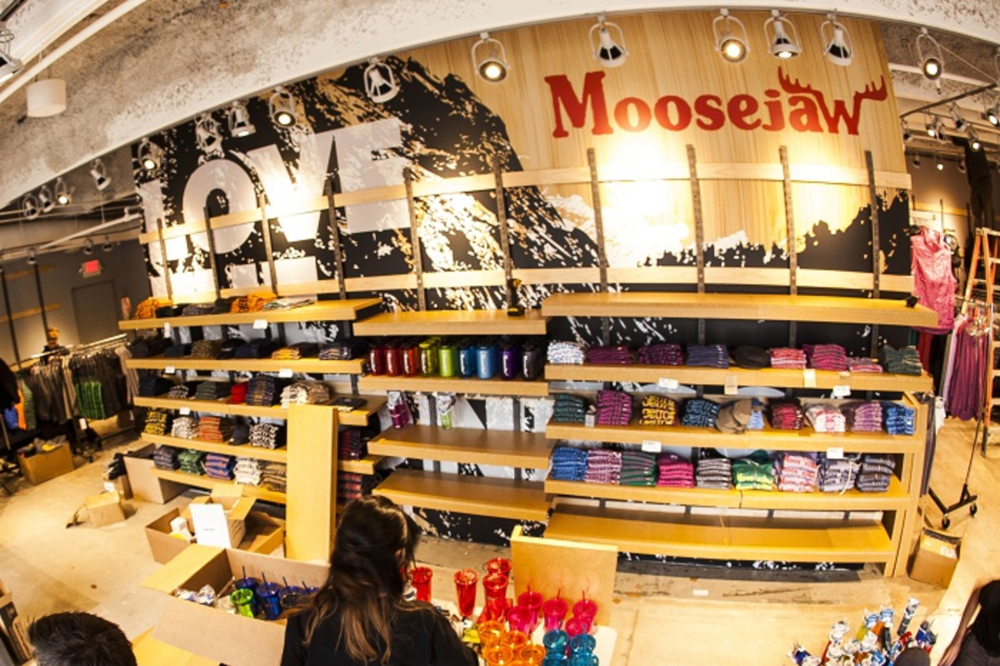Shopping cart abandonment emails can be rugged terrain for any marketer. And determining the right email content, frequency, and send time can seem like a mountain of an obstacle. Outdoor apparel retailer Moosejaw survived these very conditions when it redefined its shopping cart abandonment program earlier this year.
Moosejaw implemented a shopping cart recovery tool called Conversion Manager from remarketing platform provider SeeWhy this past February. Dan Pingree, VP of marketing for Moosejaw, says that the brand wanted to have more control over the testing and timing of its shopping cart abandonment program, as well as the ability to customize its email content.
Pingree describes its former shopping cart abandonment program as “generic.” The company sent retreating shoppers a series of three emails—all of which contained the same message. He says that Moosejaw simply “dumped” all of the abandoned products into an email and sent it without a clear call-to-action. He also admits that the timing of these emails were off. In fact, consumers who had abandoned their virtual carts didn’t receive their first email until six days later.
“A lot of people’s attention span isn’t that long, and they won’t even remember what they’re shopping for six days ago because they’re on so many different sites,” Pingree says. “So the lapsed time was a major problem.”
As a result, Moosejaw worked with SeeWhy to completely rethink its shopping cart abandonment strategy. Rather than sending three emails, Moosejaw sent only two messages—the first within two hours after someone abandoned a virtual shopping cart, and the second after another 24 hours. Pingree says the decision to send fewer emails was a conservative move to test whether SeeWhy’s automated remarketing tool was effective. Brand marketers also wanted to be sensitive to the number of emails consumers receive.
“Some retailers just keep bombing you with abandoned cart emails,” Pingree continues. “Past a point, it loses its effectiveness and becomes annoying.”
Unlike past email campaigns, each email now has a specific message. The first email reminds customers what they left in their cart; it also reinforces that Moosejaw offers price matching and online customer service chats. These additions are meant to woo back shoppers who may have abandoned their carts to compare prices or research a question about a product, Pingree explains. The second email reminds customers, yet again, of their abandoned items and creates a sense of urgency by including a potential out-of-stock message. Although Moosejaw doesn’t check the status of its inventory when sending this warning, Pingree says that the brand’s inventory often sells out—quickly.
“Generally speaking, we run pretty lean on inventory,” he says. “So it really goes without saying that at any given point the stuff that’s in your cart could go out of stock.”
In addition to adjusting the number, cadence, and content of its emails, marketers at Moosejaw made the brand’s shopping cart abandonment messages more mobile friendly. For instance, instead of showing all of the cart’s abandoned items, Moosejaw now only shows the most expensive item and includes details about the one specific product: “When you start throwing a bunch of different products together in an email, there’s just not any room left for text or other value props that you want to throw in [to be readable on a mobile device].”
Conversion rate and sale per 1,000 emails sent is Moosejaw’s prime KPI, Pingree says. However, the brand also tracks other standard metrics, including open and click-through rates, average order value, and the number of unsubscribes. Although Pingree declined to share specifics, he says that Moosejaw’s results are “far better” than the brand’s previous program, and he’d like to generate even higher open rates.
“The open rates are still good,” he says, “but compared to the performance of the other metrics, if there was area to work on, that would be it.”
For marketers new to shopping cart abandonment emails, Pingree advises them to try and empathize with customers while determining how many emails to send and when to send them. He also urges marketers to provide tools that can help shoppers solve problems that stopped them from purchasing in the first place.
“Giving them the tools to provide answers to those questions or resolve those concerns, whether it’s a phone number for customer support; whether it’s a link to a chat session; whether it’s information or opportunity to do a price match,” he says. “Those things, we feel, really address some of the concerns that are the reason why the item is still in the cart.”
But more than anything, Pingree encourages marketers not to be afraid of coming off as too intrusive.
“These people are engaged enough in your site to add something to their cart,” he continues. “They’re a fair way down the purchasing funnel. [Shopping cart abandonment emails are] just a way, in a very timely manner, to reach out to them and see if there’s anything that you can do to help them in their journey—answer any questions [or] give them any tools that might help them make a good purchasing decision.”
However, he warns that there’s a fine line between aggressiveness and annoyance.
“Past a point people are [agitated], and then they unsubscribe,” Pingree concludes. “Then you lose them for all of your other emails and that’s exactly what you want to avoid.”
Photo Credit: Malakye





